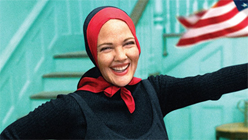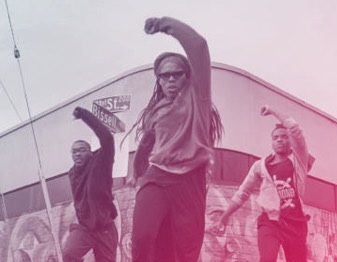The Grey Gardens phenomenon just won’t quit. The 1975 Albert and David Maysles documentary about “Big” and “Little” Edie Bouvier Beale (aunt and first cousin of Jacqueline Kennedy) was the spark, spawning a legion of cult followers. Then came the 2006 musical starring Christine Ebersole and now HBO has gotten into the game. The newest Grey Gardens incarnation, with Drew Barrymore and Jessica Lange in lead roles, serves more as a prequel than a retelling of the famous documentary. Writer and director Michael Sucsy takes us as far back as the 1930s to reveal the years that weren’t captured on film by the Maysles and the story of how two Manhattan socialites devolved into penniless recluses.
The film begins in 1936 at Little Edie’s debutante ball, where she is urged by her mother to accept the marry-or-die paradigm and hope for a “long leash.” But, despite drooling attention from a Getty and other high profile gentlemen, Little Edie has greater aspirations, mainly to become a world-famous dancer and actress. Her mother once had similar hopes for show business fame, but surrendered to a marriage with Phelan Beale, a man who would financially take care of her. This marriage ends with Phelan taking a “new fake wife” who inherits everything while Big Edie is only left with the Grey Gardens property and a monthly allowance of $150, hardly enough money to survive on, let alone upkeep the East Hampton estate.
As for Little Edie, she tries to make it in New York and has an affair with a married man (Julius Krug, the U.S. Secretary of the Interior under Truman), but both efforts fail miserably. Bruised by her big-city failure, Little Edie returns to East Hampton to take her place next to her mother, where they will come to live among cats, raccoons, and fleas in their crumbling mansion.
A sad tale, yes, but HBO’s Grey Gardens still finds the humor in this riches-to-rags story. Barrymore does a great job with all the sideways glances of the annoyed, rebellious daughter and Jessica Lange also cleverly channels the role of the shrieky, overbearing mother, making for some hilarious bickering matches. The playful, teasing relationship is best exemplified when Big Edie responds, “Think of all the hat options,” to her daughter’s distress over losing her hair to alopecia, which was the reason behind Little Edie’s various turban fashion choices. But the ultimate comedic moment comes when Jackie O, played by Jeanne Tripplehorn, makes an appearance to offer some assistance after a health inspection raid. Little Edie looks her up and down before going in for the kill and asking: “Is it true that Jack Kennedy gave you gonorrhea?”
Equally amusing are the grainy scenes recreated from the original documentary that punctuate the back-story. Drew Barrymore has clearly watched the source material dozens of times and manages to hit all the right notes, whether she’s reciting the contagious lines detailing “the best costume for the day” or marching in the foyer with her American flag. Barrymore truly seems to love this role just as much as Little Edie loved putting on a show. And this unbridled passion compensates for Barrymore’s sometimes spotty accent and uneven acting.


